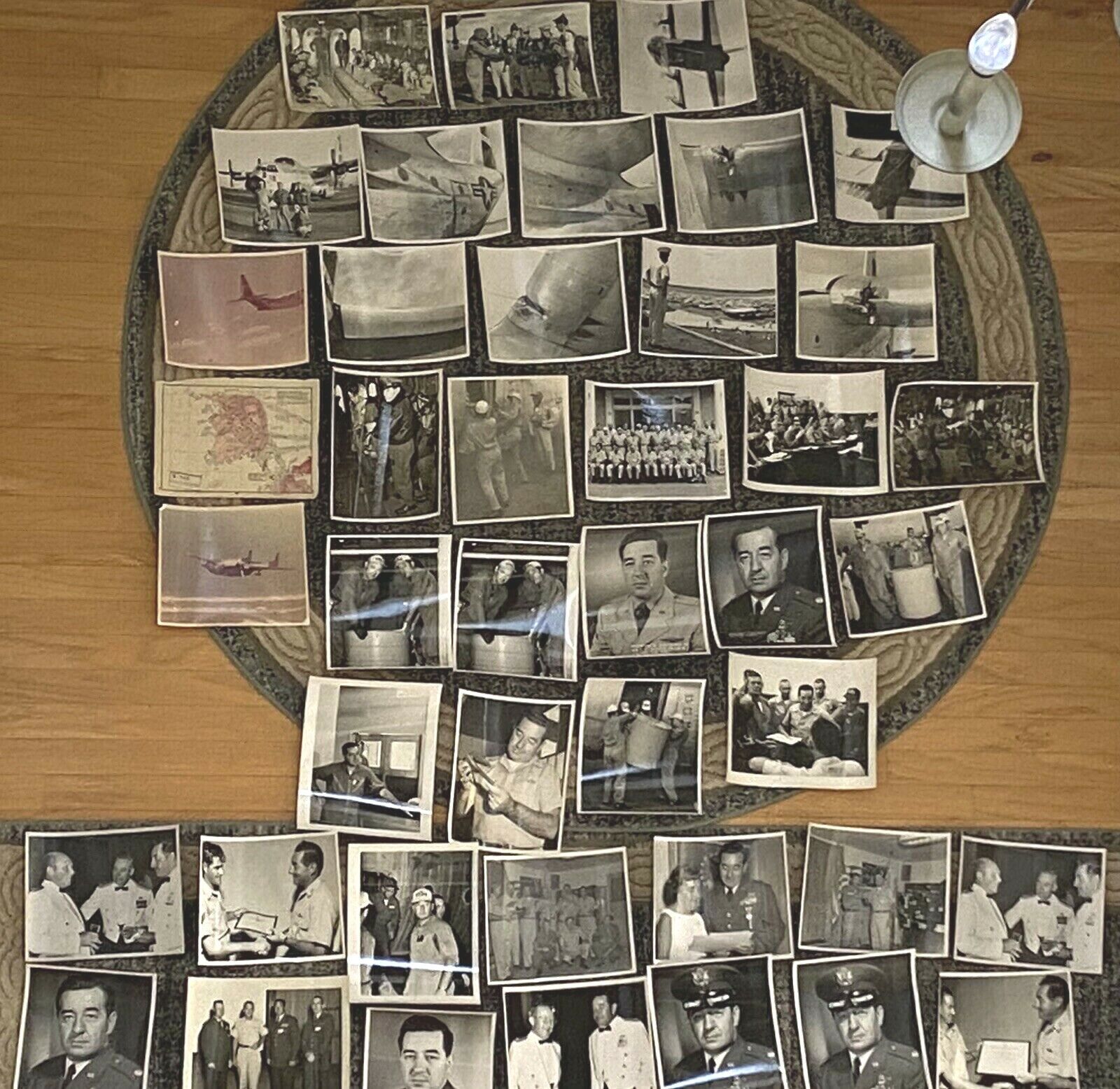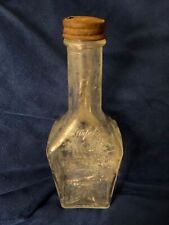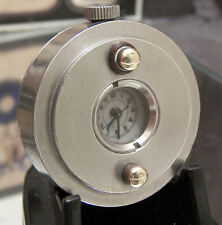Vintage AF 1955-1060s Photos of Discoverer XIII and Coronal Edward Mosher 8x10

When you click on links to various merchants on this site and make a purchase, this can result in this site earning a commission. Affiliate programs and affiliations include, but are not limited to, the eBay Partner Network.
Vintage AF 1955-1060s Photos of Discoverer XIII and Coronal Edward Mosher 8x10:
$9000.00
This is a combination ofVintage AF 1955-1060s Photos of Discoverer XIII and Colonel Edward Mosher.
Discoverer 13
Discoverer 13was anAmericanopticalreconnaissance satellitelaunched on10 Aug 1960 at 20:37:54 GMT. The last of five test flights of theCorona KH-1spy satellite series, it wasthe first fully successful flight in the Discoverer series. On 11 Aug, after 17orbits, the satellite's reentry capsule was recovered in the Pacific Ocean bytheHaiti Victory. Its payload, an AmericanFlag, was presented to President Eisenhower four days later.
"Discoverer" was the civiliandesignation and cover for theCoronasatellite photo-reconnaissanceseries of satellites managed by theAdvanced Research ProjectsAgencyof theDepartmentof Defenseand theU.S. Air Force. The primary goal of the satellites was toreplace theU-2 spyplaneinsurveilling the Sino-Soviet Bloc, determining the disposition and speed ofproduction of Soviet missiles and long-range bombers assess. The Corona programwas also used to produce maps and charts for the Department of Defense andother US government mapping programs.
The first series of Corona satelliteswere the Keyhole 1 (KH-1) satellites based on theAgena-Aupper stage, which not only offered housing butwhose engine provided attitude control in orbit. The KH-1 payload included theC (for Corona) single, vertical-looking, panoramic camera that scanned back andforth, exposing its film at a right angle to the line of flight. The camera, built byFairchild Camera andInstrumentwith a f/5.0 aperture and 61 centimetres(24in) focal length, had a ground resolution of 12.9 metres (42ft).Film was returned from orbit by a single General Electric Satellite ReturnVehicle (SRV) constructed byGeneral Electric. The SRV was equipped with an onboard smallsolid-fuel retro motor to deorbit at the end of the mission. Recovery of thecapsule was done in mid-air by a specially equipped aircraft.
The Discoverer program began with aseries of three test flights whose satellites carried no cameras, all launchedin the first half of 1959. There followed eight operational Discoverersatellites, all of them partial or complete failures, though Discoverer 11,launched 15 April 1960, carried a new vacuum-resistant film and was the firstmission on which the onboard camera worked properly. Discoverer 11 failed onreentry, caused by the explosion of its spin motor, andDiscoverer 12, launched 29 Jun 1960, was a diagnostic flightto determine the causes of the various issues plaguing the program. Discoverer12 was lost shortly after launch when its Agena booster malfunctioned.
Discoverer 13 was adiagnostic test satellite identical to Discoverer 12, a battery-poweredsatellite,housed in an Agena-A stage and composed of asatellitebusand SRV. Discoverers 12 and 13 largelydiffered from their operational predecessors in that, instead of mounting the"C" (for Corona) surveillance camera, the SRV contained extratelemetry. The bus also included a doppler beacon and external lights fortracking purposes. The combination of bus and SRV massed 772 kilograms(1,702lb), the SRV alone massing 54.55 kilograms(120lb)Like, Discoverer 12, Discoverer 13 carried a newlydeveloped gas motor for spin stabilization to replace the system that hadcaused the loss of Discoverer 11. Discoverer 13 also carried an American Flagin its SRV.
Launched 10 Aug 1960 at 20:37:54 GMT fromVandenberg LC 75-3-5byaThor DM-21 Agena-Arocket,Discoverer 13 performed according to plan. On 11 August,after 17 orbits, Discoverer 13 received a command from a ground stationonKodiak Islandtostart the reentry. After the Agena pitched itself down 60 degrees, the recoveryvehicle was ejected by small springs, and the new spin engine, utilizing coldgas, spun the SRV for stability. Its retrorocket fired, reducing the capsule'svelocity by 400 metres (1,300ft) per second, and then the spin systemdespun the spacecraft. Just before it started to heat up on reentry, the orbitejection subsystem dropped off the capsule and its heat shield. At 15,000 metres(49,000ft) a small parachute was deployed, strobe lights and a radiobeacon were activated, and the heat shield was released. After stabilization alarger parachute was deployed.
Though the SRV was supposed to have beencaught in midair, the recovery airplane went off in the wrong direction,andthe capsule splashed down in 610 kilometres (380mi) NNW ofHonoluluin the Pacific Ocean. A naval vessel, TheHaiti Victory,sent out a helicopter which dropped divers into the water to attach a collar tothe capsule for helicopter retrieval. The SRV was brought back to the ship andthen taken toPearl HarborinOahu.
Four days later, on 15 Aug, the AmericanFlag that Discoverer 13 carried instead of a camera was presented to PresidentEisenhower, the public celebration reinforcing the Corona program's civiliancover. Lockheed employees celebrated the successful flight with a party at ahotel inEast Palo Alto,California, during which they threw program manager James Plummer into the pooland then jumped in, themselves.
The Agena portion of Discoverer 13reentered on 14 November.
The success ofDiscoverer 13 paved the way for the first fully successful operational flight,Discoverer14, launched on August 18, 1960. The CORONA program went on to comprise 145flights in eight satellite series, the last mission launching on 25 May 1972. CORONA was declassified in 1995, and a formal acknowledgement of theexistence of US reconnaissance programs, past and present, was issued inSeptember 1996.
Force), 1921-2005Born and raised in New Bedford, Mass.He was the son of the late Frederick P. and Cedea H. Mosher.He was married to his wife, Eleanor Harrington Mosher. They had 4 sons, Edward H. Mosher Jr.,James T. Mosher,Glenn F. Mosher, John F. Mosher.
He was a graduate of NewBedford High School and Park College, Parkville, Mo. A career Air Force pilot,he served in WWII, the Korean War and Vietnam before retiring in 1973, aftercompleting his last assignment at the Pentagon. He was involved in the spaceprogram and was a recipient of numerous awards and honors, including the BronzeStar and Air Medal.
Vintage AF 1955-1060s Photos of Discoverer XIII and Coronal Edward Mosher 8x10:
$9000.00

Related Items:
Vintage AF 1955-1060s Photos of Discoverer XIII and Coronal Edward Mosher 8x10
$9000.00
vintage “Harpel’s” bottle. What an interesting piece seeing how there is no af I
$6000.00
VINTAGE IWC GENUINE RARE MILITARY RAF 10AF / 807 MK X1 AIRCRAFT GUN CAMERA WATCH
$4295.00







